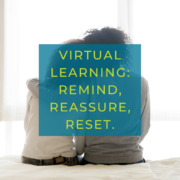LE Does It Best: How to Make the Most of Tutoring Sessions
Learning is not accompanied by a one-size fits all instruction manual. There are countless roadmaps to lead a young learner towards academic success. An essential starting point is for parents, educators, and the students themselves to identify academic strengths, utilize these skills, and accommodate any learning difficulties to establish grit and perseverance.
Basically, we need to know what we’re good at, what we’re not so great at, and how to use the former skills to compensate or balance out the struggles. This all seems well and fine, but often students struggle to reach this precarious balance of strengths and weaknesses, especially when the pressure for grades, scores, benchmarks, and admittance looms.
However, at Learning Essentials (LE), we know how to help families bridge the gaps to ensure academic achievement. Below are the best methods to make the most of your tutoring and study sessions, followed by ways in which LE helps to establish these routines for students of all abilities and needs.
– Establish and maintain a regular and consistent tutoring schedule. Depending on a child’s needs, tutoring may need to take place several times a week, once a week, or on an as-needed basis for major projects, exams, papers, etc. The key is to lay out a tutoring schedule that incorporates definitive learning goals aligned with the families realistic schedule.
– Treat tutoring sessions as a priority. Tutoring time needs to be taken seriously, but keep the conversation positive, since a student’s effort and motivation have a huge part in how successful the sessions will be. Provide reassurance that tutoring is not a sign of failure or incapability, but an extra measure to simplify learning and to help your child reach success.
– Build in flexibility. While consistency is key, we all know that daily life can become hectic, especially in the throes of the school year. Therefore, flexibility on the tutor’s part is essential. Talk about scheduling and a plan for last-minute cancellations up front.
– Remove distractions. When planning to keep tutoring sessions productive and get the most out of each meeting, discuss how to maintain a focused learning space. If tutoring at home, ask your child to hand over the phone, or other device for the duration of the session. Stress that this is not a punishment, but that uninterrupted instruction is key for success.
– Decide on a tutoring location that promotes concentration. Perhaps the neighborhood library or child’s school would be best. If working at home, set up an area that accommodates quiet productivity, away from screens, visitors, phone calls, and siblings. If the work space looks out into the backyard where siblings or neighborhood friends might play, consider closing blinds or relocating—your child shouldn’t have to watch others play while he’s working on school work.
– Set up a functional workspace. Make sure it is spacious enough for all necessary learning materials and consider flexible seating options. Especially for students with attention difficulties or tendencies toward hyperactivity or restlessness, a yoga ball, beanbag, cube, or stool can promote concentration and focus through muscle engagement.
– Discuss the length and frequency of brain breaks with your child and his tutor. These brief breaks in instruction and learning allow for little minds and bodies to take a much needed hiatus to recoup and refocus during a tutoring session.
– Set goals for tutoring sessions, both short term and long term. Be sure to discuss steps and methods for attaining these goals. It is important that parents know the trajectory of their child’s tutoring plan—what skills each session will address, how they’ll be measured, and what the plan might be for struggles or difficulties ahead. Transparency and communication are crucial components to establish a successful tutoring plan.








